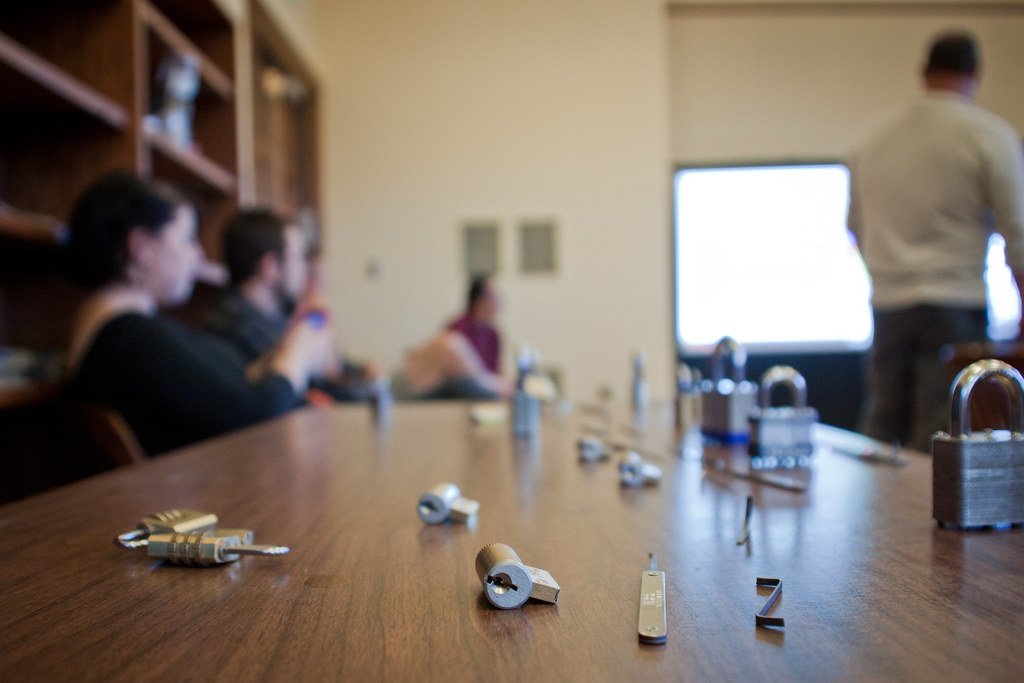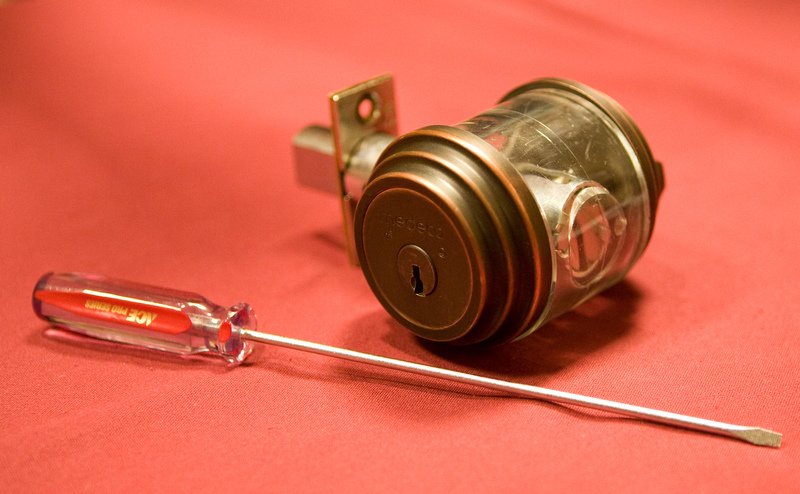Have you ever found yourself engrossed in the complex world of locks and keys, captivated by the intricate mechanisms that safeguard our belongings? If you’ve ever felt the irresistible allure of lock picking, then you might just be sidestepping into the enthralling world of locksport. Whether you’re seeking a new hobby or dreaming of becoming the next great escape artist, crafting your very own DIY locksport toolkit is the key to unlocking this captivating realm. In this guide, we will delve into the realm of locksport, unveiling the secrets behind assembling a beginner-friendly toolkit that will empower you to explore the fascinating art of lock manipulation. So, tighten your gloves, gather your curiosity, and let’s embark on a journey where the tinkling sounds of tumblers and the satisfaction of unraveling mysteries await.
Table of Contents
- Introduction: Building Your Own Locksport Toolkit
- Choosing the Right Tools: Essential Components for Beginners
- Exploring Locks: Understanding Different Types and Skill Levels
- Building Skills: Step-by-Step Guide to Practicing Lock Picking Techniques
- Advanced Techniques: Expanding Your Locksport Toolkit
- Q&A
- Wrapping Up

Introduction: Building Your Own Locksport Toolkit
Are you fascinated by the world of locks and intrigued by the art of picking them? If so, then building your own locksport toolkit is an essential step on your journey to becoming a skilled lockpicker. Having the right tools at your disposal will not only make your practice sessions more efficient, but it will also provide you with a deeper understanding of the intricacies of lock mechanisms.
Here are some essential items to consider including in your locksport toolkit:
- A selection of lock picks, ranging from hook picks to rake picks, suited for different lock types and levels of complexity.
- Tension wrenches of various sizes and shapes, as they are crucial for applying the necessary torque to manipulate the lock’s internal components.
- A practice lock or a set of practice locks to hone your skills and gain confidence before taking on real-world locks.
- Lock lubricant to ensure smooth operation of the lock’s mechanisms and prevent unnecessary wear.
- A lock scope or a lock-picking training tool that allows you to gain insights into the workings of a lock as you practice.
Remember, building your locksport toolkit is a personal journey, and it’s essential to understand the purpose and function of each tool before adding it to your collection. With time and practice, your toolkit will grow, and so will your ability to navigate the intricate world of locks and keys.

Choosing the Right Tools: Essential Components for Beginners
When it comes to diving into a new field or hobby, having the right tools can make all the difference. For beginners, it’s crucial to start with the right equipment to ensure a smooth and enjoyable experience. Here are some essential components you’ll need to kick-start your journey:
- The Basics: Every beginner needs a solid foundation, so start with the basics. A reliable set of screwdrivers, pliers, and a utility knife will prove indispensable for various tasks.
- Measurement and Accuracy Tools: When precision is key, measurement tools are your best friend. Look for a measuring tape, combination square, and a level to ensure your projects are aligned and accurate.
- Power Tools: While not essential for every beginner, power tools can greatly expand your capabilities. A drill/driver combo, circular saw, and a jigsaw are versatile options to consider as you progress.
- Safety Gear: Safety should never be overlooked, especially for beginners. Equip yourself with safety goggles, gloves, and ear protection to safeguard against any potential accidents.
Remember, building up your toolkit is a gradual process. As you gain experience and become more familiar with your chosen field, don’t hesitate to invest in additional tools and equipment. Before you know it, you’ll have a well-rounded set of tools that will assist you in any project you tackle.

Exploring Locks: Understanding Different Types and Skill Levels
Locks play an integral role in our daily lives, whether we realize it or not. From securing our homes to protecting our belongings, understanding the different types of locks and their corresponding skill levels is essential. Let’s delve into the fascinating world of locks and uncover the secrets they hold.
Types of Locks:
- Mortise Locks
- Pin Tumbler Locks
- Cylinder Locks
- Padlocks
- Deadbolts
- Combination Locks
Each type has its own unique mechanism and design, catering to specific security needs. Mortise locks, for instance, are known for their durability and strength, making them a popular choice for exterior doors. On the other hand, padlocks provide portability and versatility, perfect for securing lockers or bicycles.
Skill Levels:
- Novice
- Intermediate
- Advanced
- Expert
Understanding skill levels is crucial when discussing locks. Novices can handle basic lock repairs and installations. Intermediate enthusiasts possess more knowledge and can tackle rekeying or combination changes. Advanced lockpickers possess advanced techniques and tools, often for professional purposes. Lastly, experts have reached the pinnacle, mastering the art of lock manipulation and design.
Remember, knowledge is power when it comes to locks. Whether you’re interested in securing your home or simply fascinated by the intricacies of lock mechanisms, delving into the different types and skill levels will undoubtedly unlock a world of possibilities.

Building Skills: Step-by-Step Guide to Practicing Lock Picking Techniques
Mastering the art of lock picking may seem challenging, but with dedicated practice and the right techniques, anyone can develop the necessary skills. Whether you are a locksmith, a hobbyist, or simply intrigued by the intricacies of locks, this step-by-step guide will provide you with a structured approach to improving your lock picking abilities.
1. Start with Basic Tools
Before diving into complex lock mechanisms, it’s important to familiarize yourself with the fundamental tools. Begin by acquiring a tension wrench and a hook pick, which are essential for most lock picking techniques. These tools will allow you to apply pressure and manipulate the lock’s pins effectively.
2. Understand Lock Mechanics
To become proficient in lock picking, it’s crucial to understand how different locks work. Study the various types of locks, such as pin tumbler or wafer locks, to grasp their mechanisms and identify vulnerabilities. This knowledge will help you determine the best approach for each lock you encounter.
3. Focus on Technique
When practicing lock picking, technique is paramount. Keep these important points in mind:
- Apply the right amount of tension: Apply gentle pressure on the lock’s tension wrench to create a binding effect without causing the pins to seize.
- Feel and listen: Pay close attention to the feedback from the lock. Develop a sense of touch to detect subtle movements and clicks, and listen for any audible cues.
- Synchronize movements: While applying tension, use the hook pick to gently lift the lock’s pins one at a time. As each pin sets, move on to the next one until the lock finally opens.
Remember, proficiency in lock picking comes with practice. Dedicate time to hone your skills, experiment with different locks, and challenge yourself. As you progressively tackle more complex locks, your confidence and expertise will grow, allowing you to overcome any locking mechanisms that stand in your way.
Advanced Techniques: Expanding Your Locksport Toolkit
Are you ready to take your love for locksport to the next level? In this section, we will explore advanced techniques that will help you expand your locksport toolkit. These techniques are perfect for those looking to challenge themselves and hone their skills.
One technique that every aspiring lockpicker should master is the art of impressioning. Impressions involve creating an exact replica of a key by manipulating a blank key in the lock. This method requires patience and precision, but the satisfaction of successfully creating a working key is unparalleled. Impressions can be especially useful when dealing with high-security locks.
Another valuable skill to add to your repertoire is bypassing. Bypassing involves finding alternative methods to defeat a lock, rather than picking it conventionally. This could include techniques such as decoding or using specialized tools like bypass tools or shims. Bypassing can be a faster and more efficient way to open certain locks, particularly those with security pins or complex mechanisms.
Don’t forget to explore the realm of non-destructive entry techniques, such as lock decoding or raking. These techniques allow you to swiftly and silently gain access to locks without damaging them. Raking, in particular, can be a useful skill to have when dealing with pin tumbler locks. Raking involves using a specially designed pick to rapidly move the pins, simulating the action of multiple keys, until the lock opens.
Remember, the key to becoming an accomplished lockpicker is to continuously expand your knowledge and skills. By incorporating these advanced techniques into your locksport toolkit, you’ll be well on your way to becoming a true master of the craft.
Q&A
Where can I find the necessary tools to create a DIY Locksport toolkit?
You can find most of the necessary tools for a DIY Locksport toolkit at your local hardware store or locksmith supply shop. Additionally, there are many online retailers that specialize in lock picking tools and kits.
What are the essential tools needed for a beginner’s Locksport toolkit?
A beginner’s Locksport toolkit should include a variety of picks, such as rake picks, hook picks, and diamond picks, as well as a tension wrench. It’s also helpful to have a practice lock for honing your skills.
What materials can I use to make my own lock picks?
Lock picks can be made from a variety of materials, including paperclips, bobby pins, or windshield wiper inserts. However, it’s important to note that using professional lock picking tools provides better performance and durability.
Is lock picking legal?
In most countries, lock picking itself is not illegal as long as you have proper authorization or lawful consent to pick the lock. However, it’s important to always use lock picking knowledge and tools responsibly and respectfully.
What are the safety precautions to keep in mind while practicing lock picking?
When practicing lock picking, it’s crucial to ensure that you are not violating any laws or trespassing on private property. Always practice in a safe and controlled environment, and never use lock picking skills for illegal activities.
How can I improve my lock picking skills?
The key to improving lock picking skills is practice. Start with simpler locks and gradually progress to more difficult ones as you gain confidence. Watching tutorials and participating in online forums or local lock picking groups can also provide valuable insights and tips.
Are there any legal restrictions on owning lock picking tools?
While laws regarding lock picking tools may vary by country, in general, there are no specific legal restrictions on owning lock picking tools for personal use. However, it’s important to familiarize yourself with the laws and regulations in your specific area.
Can lock picking skills be used for practical purposes?
Lock picking skills can be useful for practical purposes, such as unlocking a door when you are locked out or accidentally locked your keys inside. It can also be valuable knowledge for those working in the security industry or to better understand the mechanics of locks. Always use these skills responsibly and consider seeking professional assistance when necessary.
Wrapping Up
As we wrap up our journey into the captivating realm of locksport, we hope you’ve unlocked a world of possibilities and discovered a newfound passion for tinkering with lock mechanisms. By now, you’ve learned how to assemble your very own DIY locksport toolkit, equipped with the perfect set of tools to open doors, both literally and metaphorically.
Remember, locksport is not only a gratifying hobby but also an opportunity to enhance your problem-solving skills and gain a deeper understanding of the mechanisms that safeguard our everyday lives. As a beginner, it’s essential to approach this craft with patience, perseverance, and utmost respect for the legal and ethical boundaries surrounding this fascinating art.
With your toolkit in hand, you now possess the power to unravel the mysteries hidden within locks. Embrace the moments of triumph when the tumblers align and the lock clicks open, but also be prepared to face the occasional setbacks that test your determination.
As you embark on your locksport journey, consider joining local locksport communities or engaging with online forums where like-minded enthusiasts share tips, tricks, and wisdom. Surrounding yourself with fellow learners and experienced practitioners will undoubtedly sharpen your skills and broaden your horizons.
Always remember to engage in locksport responsibly, only practicing on locks that you own or have explicit permission to work on. Respect the laws and regulations of your jurisdiction, ensuring that your passion for locksport never compromises the security or well-being of others.
In closing, we trust that our guide has equipped you with the knowledge and tools to embark on your locksport odyssey. May your newfound understanding of locks and your persistent curiosity fuel adventures full of challenges and triumphs. Unlock the doors of possibilities, and let the world of locksport push the boundaries of your ingenuity and imagination.
Now, armed with your toolkit and a thirst for exploration, it’s time for you to embark on your very own locksport adventure. Happy picking, dear lock aficionado!
As an affiliate, my content may feature links to products I personally use and recommend. By taking action, like subscribing or making a purchase, you’ll be supporting my work and fueling my taco cravings at the same time. Win-win, right?
Want to read more? Check out our Affiliate Disclosure page.